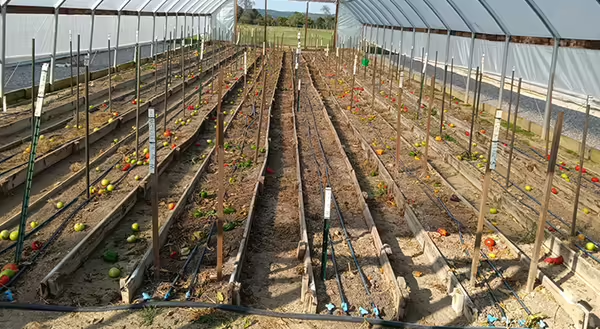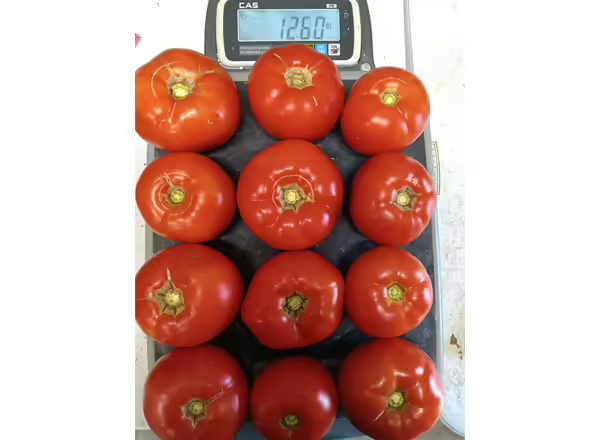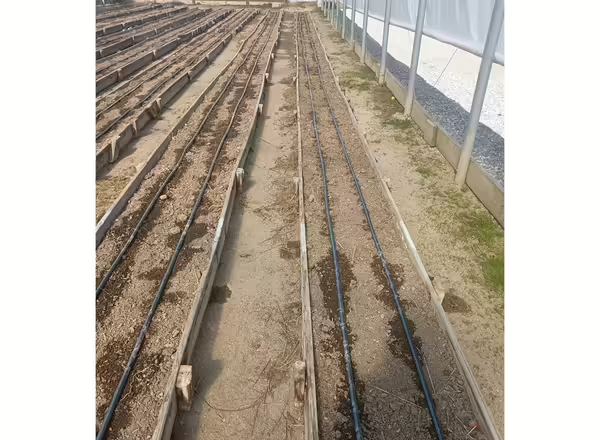
The continued warm temperatures through October made for ideal growing conditions for the tomatoes and peppers within the high tunnels at DSAC. While not the large yields like in mid-July harvests, tomatoes harvested in October had excellent flavor, size, no white core issues, and were probably the best looking and tasting tomatoes of the whole season. We estimate over 1000 pounds of marketable tomatoes were harvested within the first three weeks of October. We typically don’t see this level of fruit load so late in the season. In the past few years, we have removed plants from the tunnels by the end of September to begin cover crop seeding the first week of October. But in seeing the quality and quantity of the tomato and pepper fruits, we decided to continue with harvests and seed cover crops later. Tomato, pepper, and cut flower plants were removed from one of our high tunnels the last week of October and cover crops were seeded the first week of November. Plants were left in the other tunnel as they were continuing to yield some fruit, but those plants will be removed within the first or second week of November as well.

Data entry for the tomato and pepper harvests from both high tunnels is ongoing but once completed, we will be able to report on any differences or trends related to the cover crop plots that were terminated using solarization versus mechanical methods. As a reminder, in one tunnel, replicated plots with 4 different cover crop mixes were established: crimson clover/spring oats, crimson clover/annual ryegrass, Austrian winter pea/spring oats, and Austrian winter pea/annual ryegrass. These plots were then terminated by two different methods: solarization and mechanical. Solarization termination began the last week of February while mechanical termination took place the first week of April. This time difference allowed for more cover crop growth and biomass accumulation for the mechanically terminated plots.
I share this reminder because of an interesting and telling observation that was seen as beds were being prepared for cover crop seeding in this last week of October. To create an optimum seed bed and the best germination situation for the cover crop seeds, drip irrigation is utilized to ensure ample moisture throughout the bed profile. After running the irrigation for an hour or so, patterns could be seen from plot to plot in how the water was being distributed. Some plots showed little to no moisture spreading across the bed face or running out beneath the bed, meaning the water was infiltrating deeper into the soil profile. This demonstrates some of the benefits of cover cropping which is the ability to break up the hard pan, access nutrients and moisture deeper into the soil, and allow for infiltration of water and nutrients. Other plots showed water starting to spread out from the drip lines across the bed face and in some instances, water was beginning to run underneath the wooden boards on the sides of the beds and into the walk aisles. In these plots, the hard pan had not been broken up enough to allow water to infiltrate deeper into the soil profile. When you look at the plot plan created for this project along with the distinct watering patterns that became noticeable this past month, the mechanically terminated plots line up with the water patterns that penetrate deeper into the soil and don’t show water spreading across the bed face. Plots were randomized and replicated within this tunnel, creating 32 plots 20 feet in length, and termination method could be identified correctly almost 90% of the time just based on the observed water pattern. I found this to be an interesting and observable demonstration on the importance of cover crop termination management and its effect on subsequent soil health parameters.

